All About Sansevieria
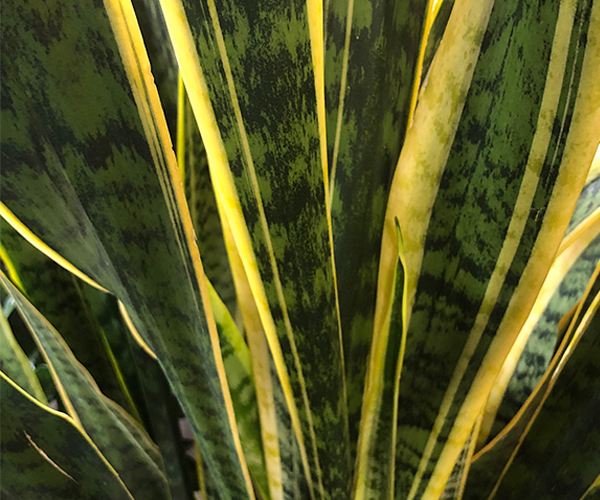
Sansevieria trifasciata ‘Laurentii’
Keep reading this post to learn all about Sansevieria, also known as Mother-in-Law’s Tongue or Snake Plant. These common names actually refer to one of the most commonly seen forms, featuring long, flat sword-like leaves. There are many other varieties as well; details towards the end of this post.
Interesting fact, there is one common name for Sansevieria that you might not have heard before; Viper’s or Ceylon Bowstring Hemp. This name was given due to the strength of the plant fibers that are, you guessed it, strong enough to make bow strings from. This common name is most aptly applied to the Zeylanica Sansevieria (picture further down in this post).
And now one more interesting fact; Sansevieria has now (2018) been included into the Dracaena genus due to molecular discoveries. In fact, the ‘Sansevieria is actually a Dracaena debate’ dates back to the 19th century. Who knew?! Our team will most likely take a while to absorb this recent adjustment, if we get used to it at all.
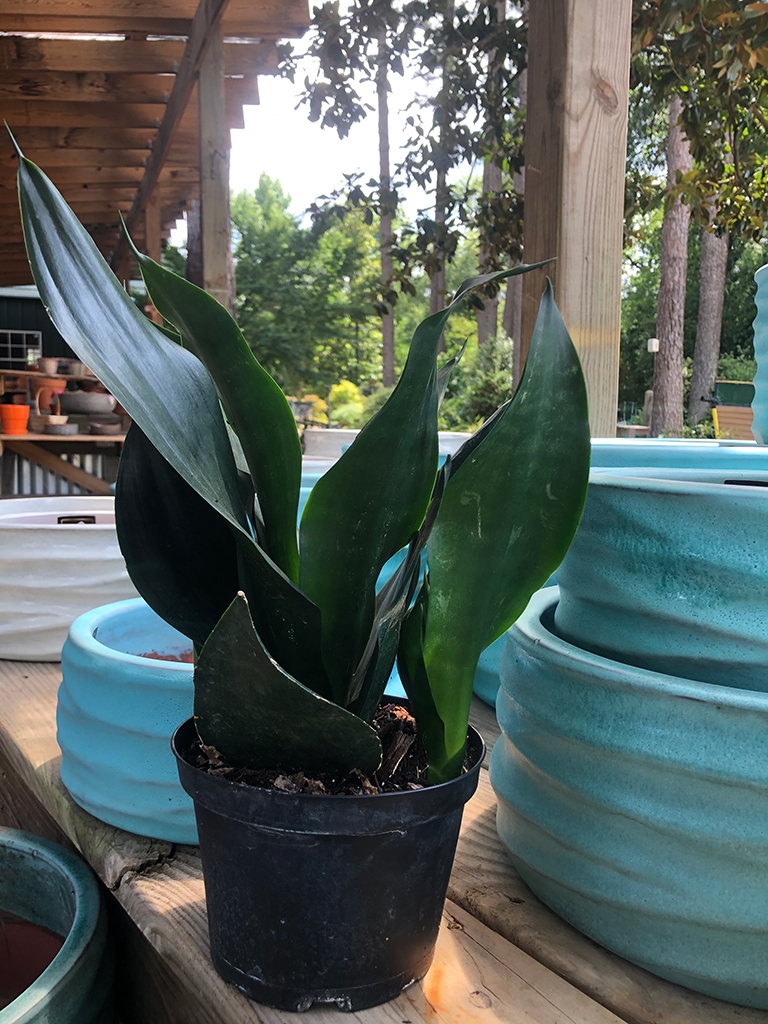
Sansevieria trifasciata ‘Black Dragon’
Lighting for Sansevieria
All of the Sansevierias readily available to be grown as houseplants or tropicals in our area share a few key characteristics. Sansevierias are native to tropical western Africa, Madagascar and southern Asia and are winter hardy in Zones 10-12. Although they are not winter hardy here in Arkansas, they make wonderful houseplants that can tolerate a variety of light conditions.
If you search online, you can find a variety of lighting recommendations, from low to bright light. The reason? They can tolerate almost any light level, including artificial light, although too much direct sun could cause foliage to burn. For this reason, avoid placing them in direct afternoon sun outdoors or in south or west facing windows. Too little light can lessen the vibrancy of interesting leaf colors.
Having trouble figuring out how much light you have? Read our Let There Be Light: Houseplant Lighting Explained blog post.
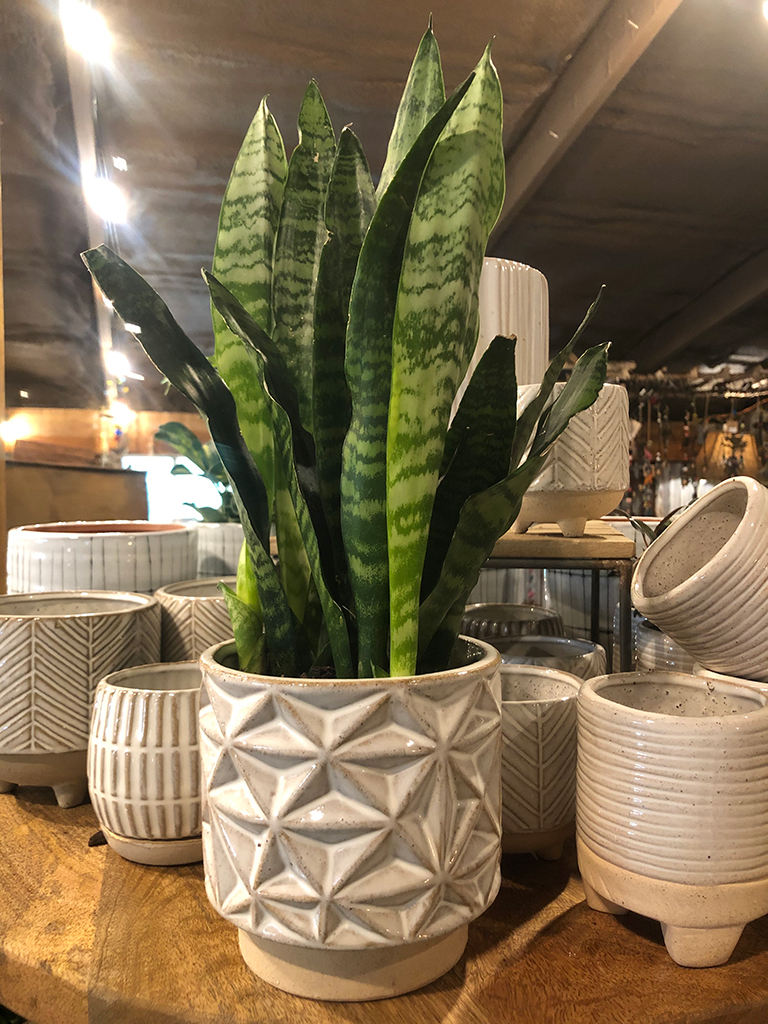
Sansevieria zeylanica (this is the one that is called Bowstring Hemp)
Watering Sansevieria
And speaking of foliage or leaves, Sansevierias have distinct ones. Thick stemless, water storing leaves, vary from species to species and may be tall and sword-shaped, narrow and flat, or even round. All provide another key characteristic; drought tolerance. Sansevierias do not need much water to grow successfully. Water when soil has dried out; leaves will pucker slightly if very thirsty.
Conversely, watering too much can cause root rot. Plant in a pot with good drainage or if using a cache pot, remove plant to water then replace in cache pot once excess water has completely drained.
Not sure what a cache pot is? Read our Potting Up Houseplants post.
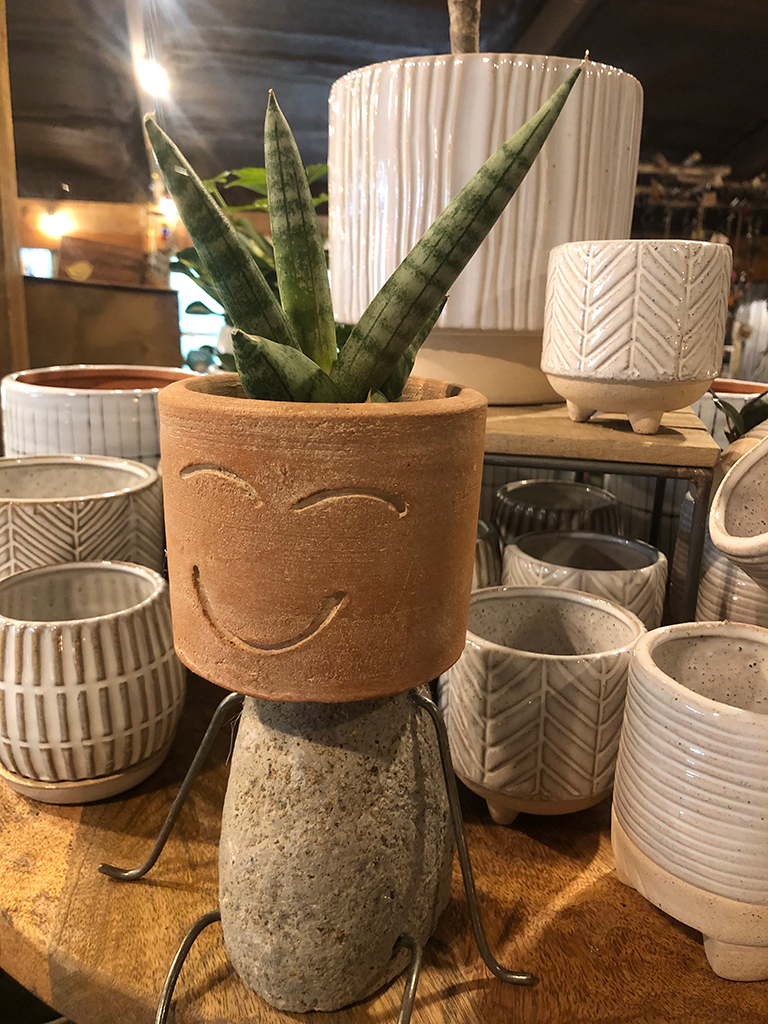
Sansevieria cylindrica ‘Starfish’
More Growing Tips for Sansevieria
Adding to this houseplants accurate reputation as an easy plant is the low feeding needs. Fertilize Sansevierias every month during the growing season, from Spring to Fall. Use half the recommended rate of a balanced houseplant fertilizer such as Bonide Liquid Plant Food. As with all fertilizing, apply when plant is adequately hydrated and not water stressed.
For information on fertilization, read our Feeding Your Houseplant blog post.
Sansevieria will be planted in soil that drains well when you get them and when re-potting, use the same type. We suggest either Ferti-Lome Cactus Soil or our Good Earth brand Professional Growing Mix. Using a heavy potting soil could more easily result in root rot.
Propagation of Sansevierias can be done by seed; yes, they flower and set seed! But since they rarely do it when grown indoors and the plants themselves grow so slow, this isn’t usually a viable propagation method. The usual methods of propagation include division of rhizomes (this being their method of growth) or by leaf cutting.
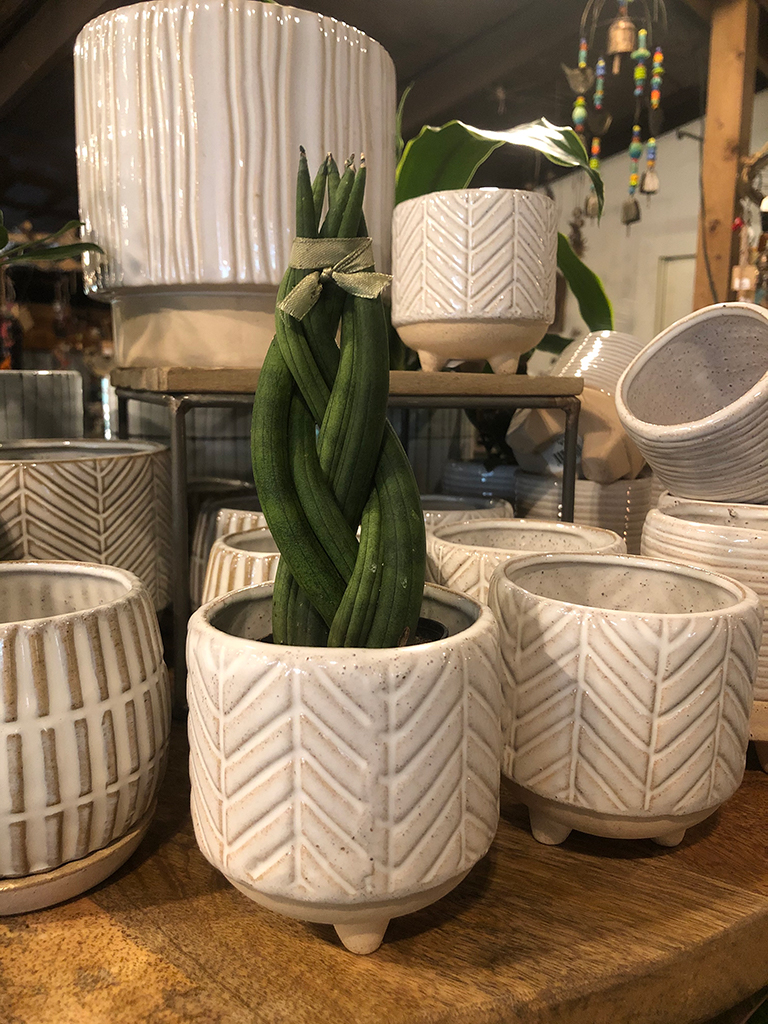
Sansevieria cylindrica (also known as dragon fingers or spear plant)
Sansevieria Varieties
Seems like there used to be only two or three available varieties, the long, sword-like green and silver and the long, sword-like green and silver with a yellow edge. Now you can find all kinds of Sansevierias; we have included some images of several we carry throughout this article. The differences are pretty obvious but as you can see, all have thick leaves. All are stemless. The main difference is leaf shape, leaf color, and growth habit.